Wild Violets: 7 Lovely and Practical Uses for These Backyard Beauties
It always feels like spring really arrives when the wild violets start blooming. They pop up quietly across the lawn, undeterred by chilly winds or clumsy boots. They don’t ask for much — just a patch of soil, a bit of sun, and no one to mow them down.
Some people see them as weeds, but I never have. To me, they’re little purple flags waving us into the new season, softening the world after winter’s long stay. And best of all, they’re not just beautiful — they’re useful, too!
If you have wild violets growing in your yard or along your favourite walking path, here are five lovely and practical ways to use them — simple things you can make or do that honour their charm and bring a bit of old-fashioned magic into your home.
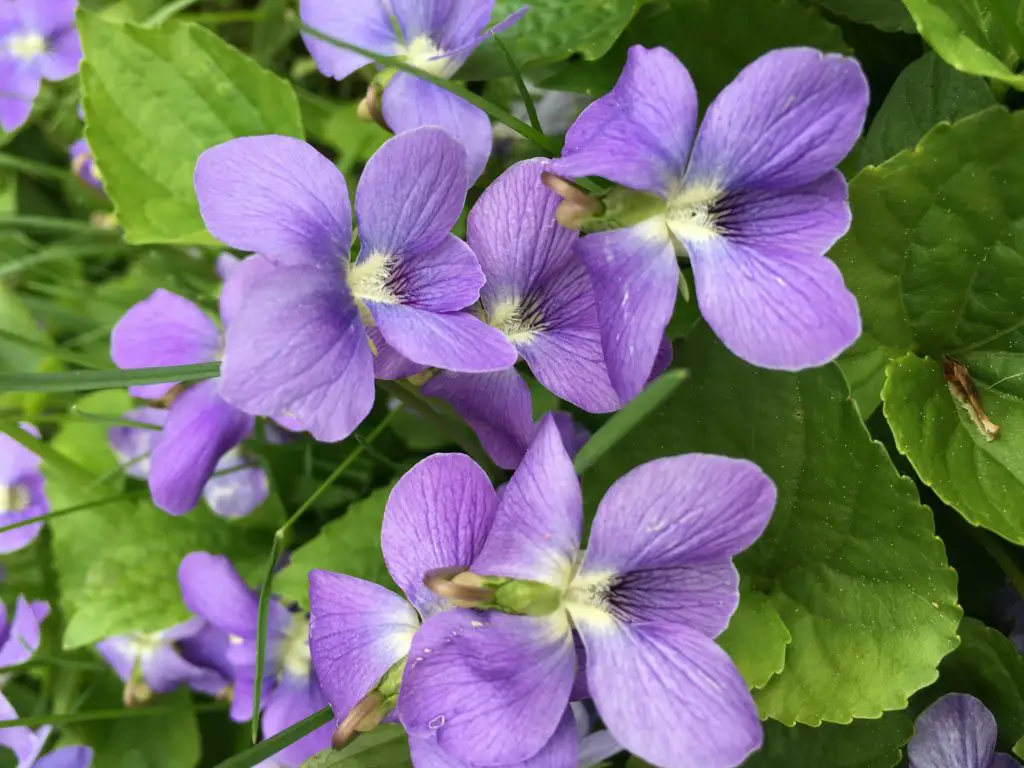
What Are Wild Violets?
Wild violets (Viola odorata) are low-growing perennials that bloom in early spring. Often mistaken for weeds, these edible flowers are rich in vitamins A and C and have long been used in traditional herbal medicine. You’ll usually find them carpeting shady lawns or garden edges with their heart-shaped leaves and signature purple blooms.
Unlike the African violets we keep in pots indoors, these little wildlings are edible from the leaves to the flowers, They’re rich in vitamin C and offer gentle support for the lymphatic system and respiratory health. Violets have been traditionally used in salves, syrups, teas, and even as a natural dye.
Note: Always make sure to harvest wild violets from unsprayed areas, free from chemical fertilizers or pesticides.
RELATED: Is Garlic Mustard Invading Your Garden? Eat it!
WHAT TO DO WITH WILD VIOLETS: A VIDEO
If this is your first time visiting the Kitchen, you’re about to find out why I call my kitchen vintage… If you like my style, please consider subscribing to the Vintage Kitchen Vixen YouTube channel!
As of Spring 2023, I released a new video with even more ideas on what you can do with wild violets. Check it out!
This article may contain affiliate links, meaning that if you choose to purchase something after clicking on one of the links in this post, I may earn a small commission at no additional cost to you.
RELATED: Why Everyone Should Learn How to Forage
PICKING WILD VIOLETS
If you’re planning to eat or preserve wild violets, make sure you’re harvesting from an area free of chemical sprays and pollutants. A good rule of thumb is if you wouldn’t picnic on the grass there, don’t pick your flowers from it either. Prime example: a roadside or dog park.
Violets are often considered weeds because of how aggressively they grow. I am constantly plucking violets from my garden beds because of how insistent they are. It’s one of the few wild plants you don’t have to worry about over-harvesting. That being said, if the patch you’re foraging from is small, it’s good to be respectful and give it a chance to thrive. Moreover, try not to take more than you’ll actually use. These small acts of seasonal celebration should be more about connection and respect than greed.
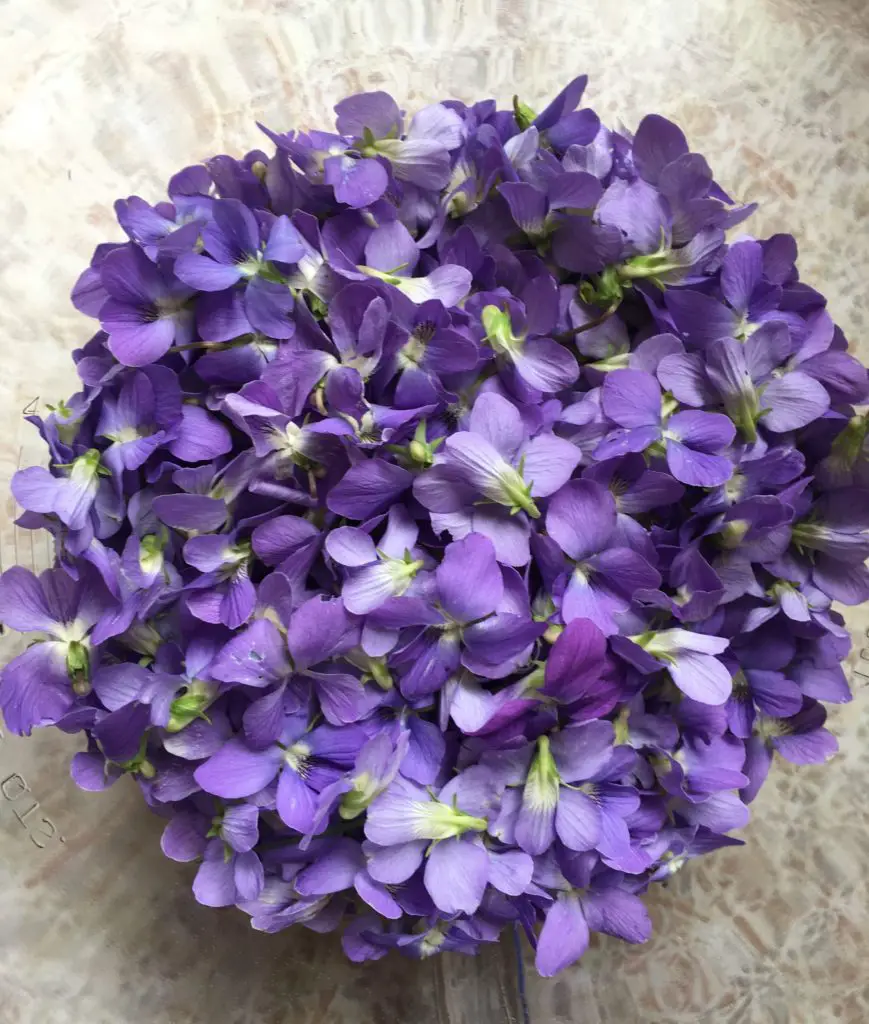
1) MAKE TINY VIOLET BOUQUETS
Violets are delicate, but they make the most charming miniature bouquets. Tuck a few sprigs into a brown apothecary bottle and place them on your windowsill, bedside table, or in the bathroom for a whimsical touch of spring. I scatter these bouquets around my house, taking great delight whenever I catch sight of one.
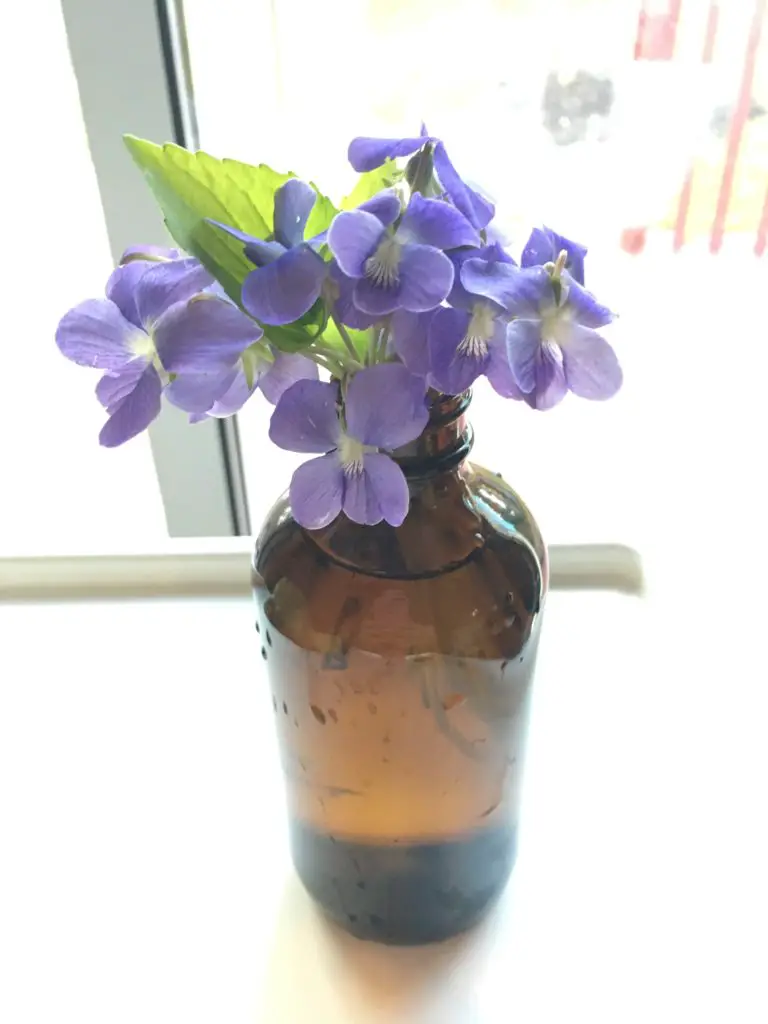
2) PRESS WILD VIOLETS FOR ART OR STATIONERY
A few years ago, I inherited an old German children’s storybook that used to belong to my Oma. When I first cracked it open, I found pressed pansies caught between the pages, perfectly preserved and waiting for me to rediscover them. I knew I had to carry on the tradition with my own favourite purple blooms.
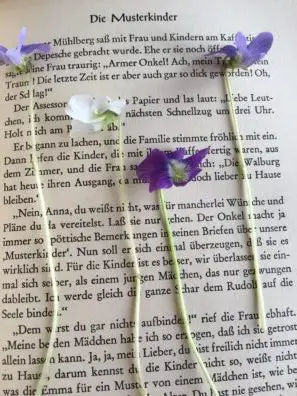
Pressed violets retain their colour beautifully and are perfect for adding a botanical touch to cards, bookmarks, framed art, or nature journals. Simply place fresh violets between parchment paper and tuck them inside a heavy book for a couple of weeks.
Once dried, you can use a bit of glue to affix them to paper or slide them into a floating glass frame. It’s a simple way to preserve spring’s beauty — and a great project for kids or quiet evenings.
3. Make Wild Violet Simple Syrup
Wild violet syrup is stunning — both in taste and colour. The infusion begins as an inky shade of blue but turns purple when lemon juice is added. It’s like watching a little bit of kitchen magic unfold.
Use the syrup to sweeten tea, lemonade, or sparkling water. You can also drizzle it over pancakes, waffles, or vanilla ice cream.
I have a post that’s all about making flavoured simple syrups, but the violet one is completely different.
Begin by soaking 3.5 cups of violet flowers in a cup and a half of water overnight. When straining, press the petals until they’re dry, then slowly heat the infusion with 3 cups of sugar until it’s dissolved (this is what’s called a concentrated syrup).
The syrup will be an inky shade of violet, but a few drops of lemon will transform it into a rich purple syrup.
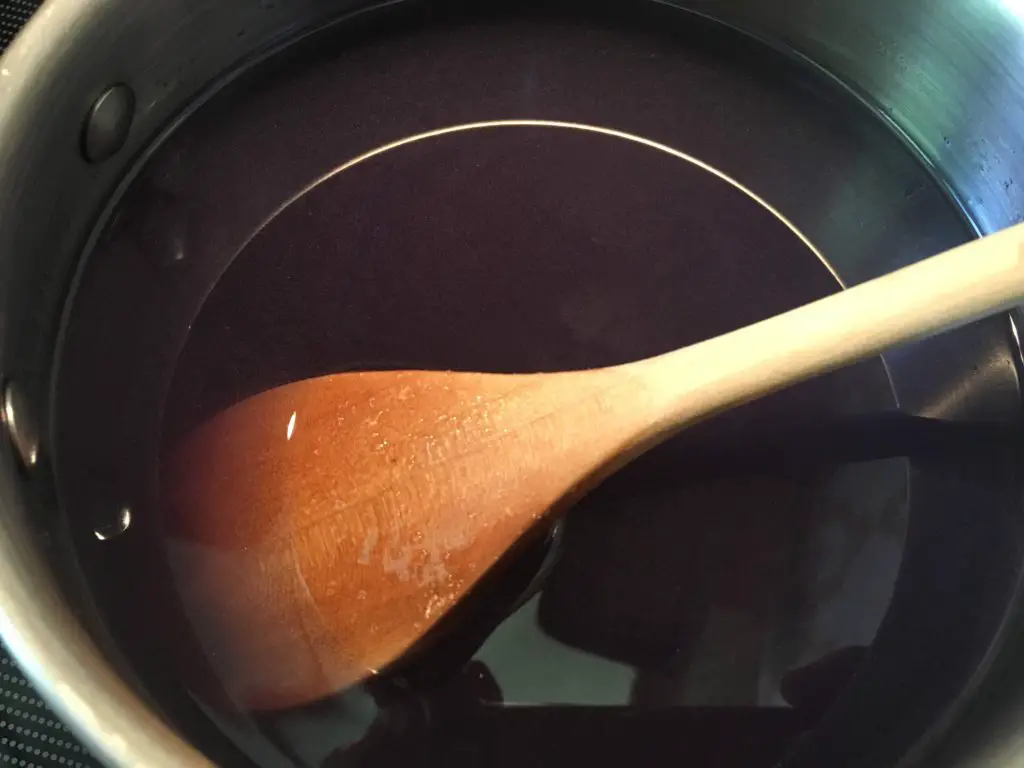
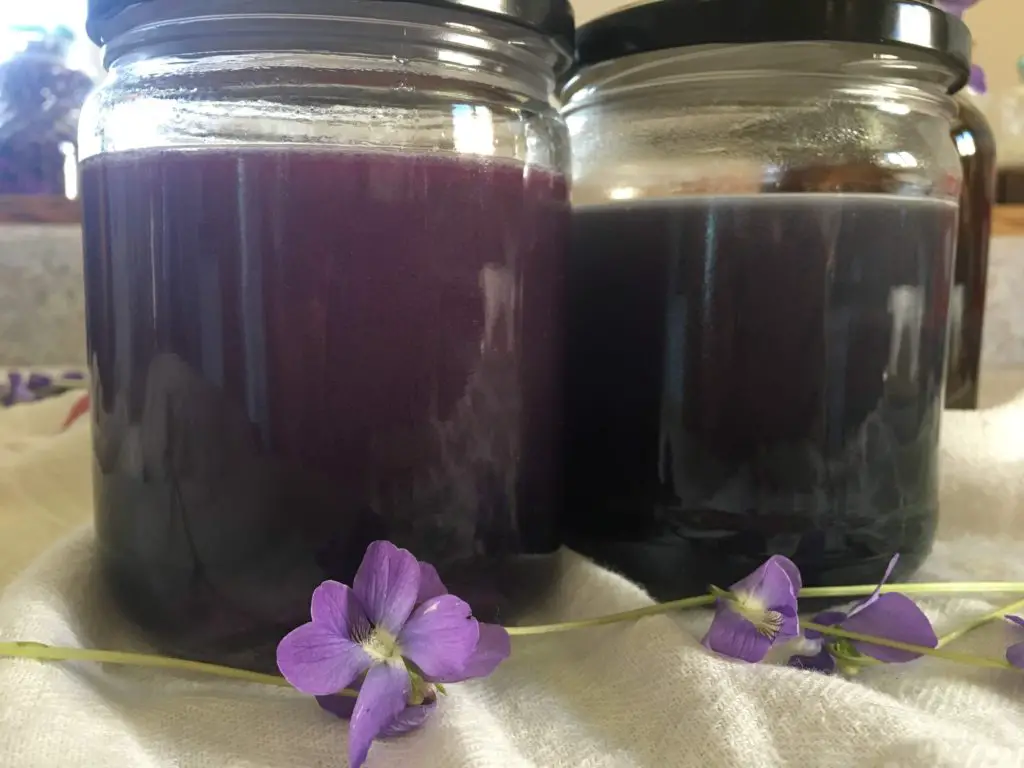
4) CRAFT PRETTY VIOLET COCKTAILS
Where there’s simple syrup, there’s potential for delicious drinks!
Wild violets lend a whimsical and elegant flair to springtime drinks. Use violet simple syrup in cocktails or mocktails, or float fresh blooms on top of your favourite beverage for a floral flourish.
Try a “Violet Fizz” with sparkling water, violet syrup, and a squeeze of lemon — or pair with gin and tonic for something more grown-up.
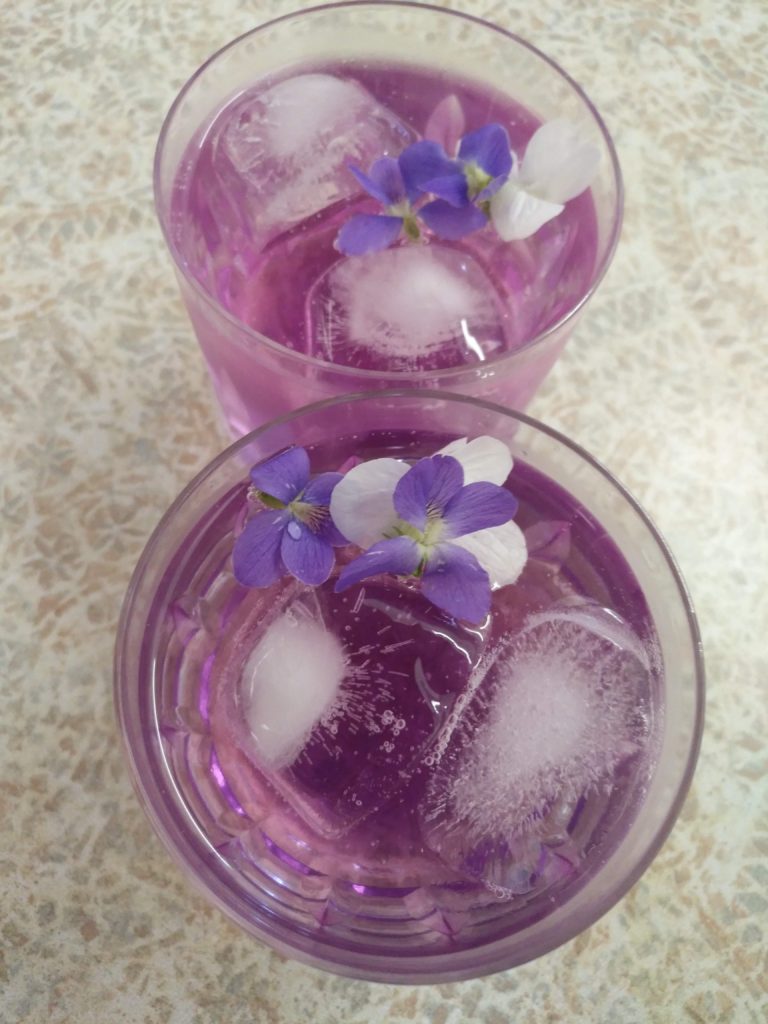
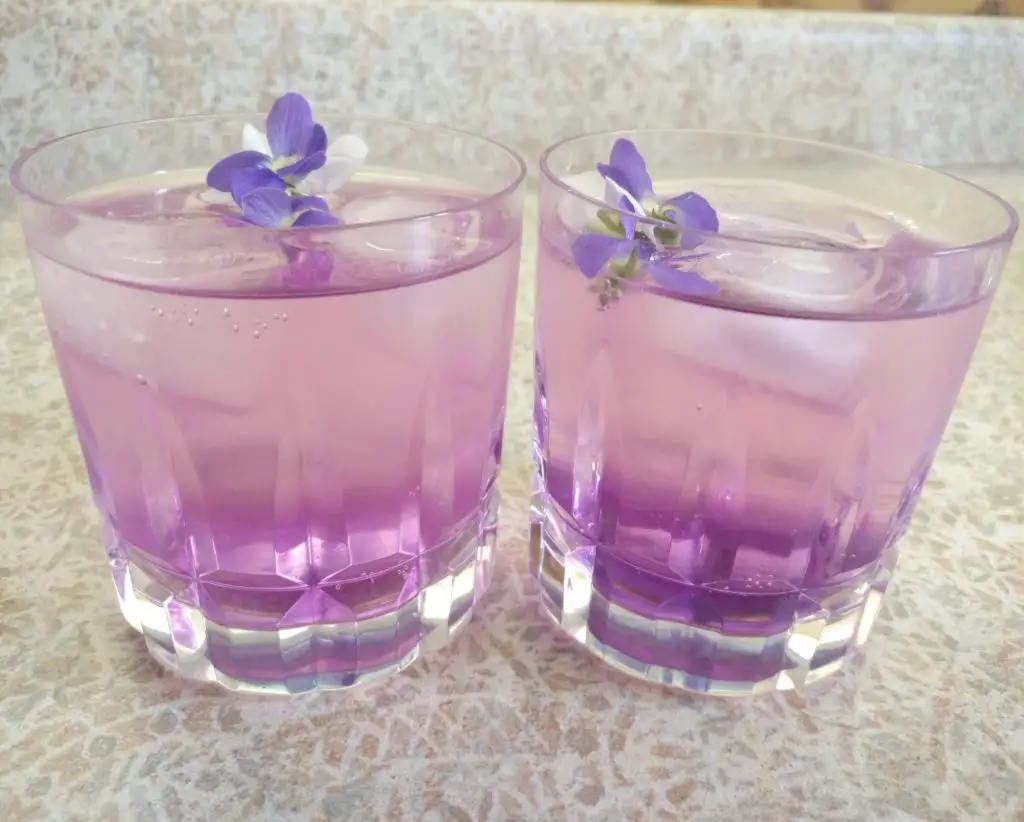
5) TRY MAKING SUGARED VIOLETS
Sugared violets are a timeless, old-world confection — almost too pretty to eat. You can crystallize the flowers by painting each petal with egg white and dusting it in superfine caster sugar before allowing it to dry completely. Another method recommends dipping them in a simple syrup and sprinkling them with either caster or icing sugar.
Personally, I don’t have the time and patience to make candied violets. It’s almost like a zen practice and my first foray into making them went completely awry.
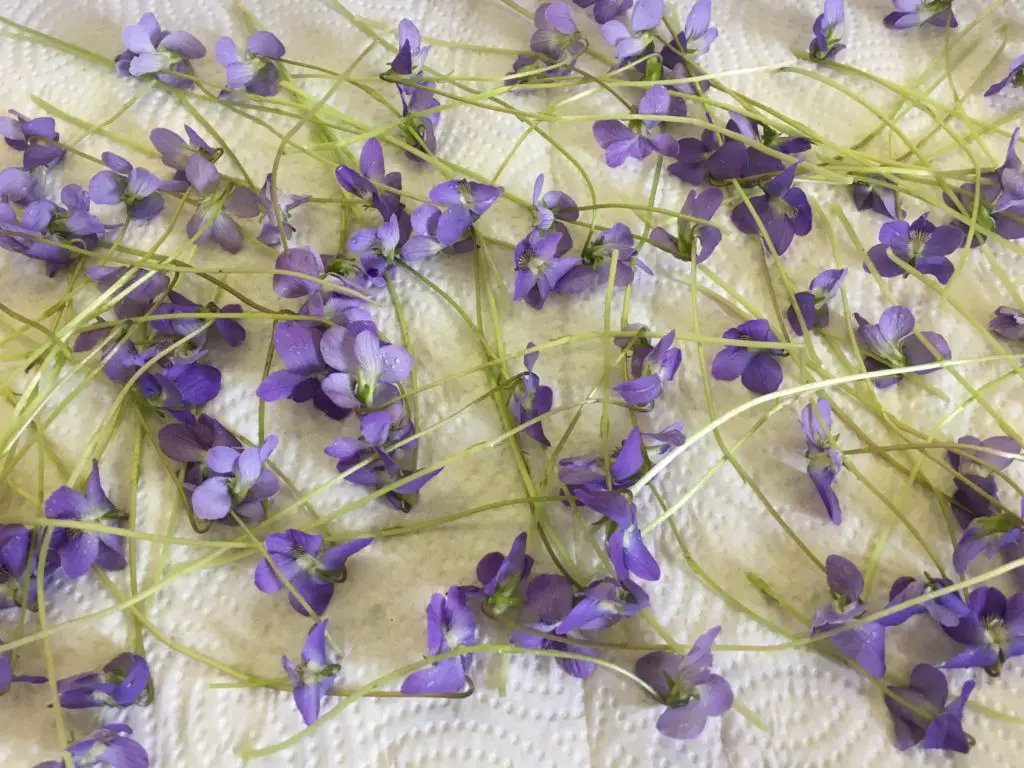
All the same, these delicate edible blooms make beautiful decorations for cupcakes, cakes, or cookies. They also store well in an airtight container, giving you a stash of sweetness for future tea parties or spring celebrations. If you want to see what the process of sugaring violets is supposed to look like, you can take a look over here. Otherwise, Amazon carries these sweet little candied violet petals, but where’s the fun in that?
6. FREEZE INTO ICE CUBES
Wild violets look absolutely magical when frozen into ice cubes. Just place a single flower in each compartment of an ice cube tray, fill with water, and freeze.
These violet cubes elevate everything from lemonade to iced tea and look stunning in a pitcher on a spring table. It’s a small detail that adds a lot of charm to gatherings — or just to an ordinary Tuesday.
7. TOSS INTO SALADS & SWEET TREATS
I’m such a sucker for wild spring greens, as evidenced by my wild dandelion salad recipe. Whenever I make a springtime salad, I head outside and pluck mild violet leaves to toss into the mix. As for the blooms, they have a very mild, slightly sweet flavour and make a beautiful addition to spring salads or dessert plates.
You can sprinkle the flowers over fruit bowls, cakes, or even mix them into butter or honey for a seasonal twist. They’re also a lovely way to decorate shortbread or lemon bars. Just be sure your violets are free from pesticides and haven’t been foraged from roadsides!
MORE WAYS TO PLAY WITH WILD VIOLETS
There are SO many ways to use violets. Here’s a little roundup of some of the neat things you can do with these spring blooms:
Infuse oil or make a balm with the leavesMake violet jelly and vinegarUse violet leaf infused oil to make soapInfuse honeySteep the flowers to make a teaMake a natural cough syrup
LOOKING FORWARD TO NEXT YEAR’S SWEET VIOLET HARVEST
I always sniffle a bit when the lawnmower chews up my violet patch to bits. “I’m so sorry!” I choke out, hoping they’ll forgive me. And they do because they come back the following year with an even greater vengeance.
Every spring I revel once more in their beauty and then I set about harvesting them for more of my kitchen experiments. What can I say? It’s fun having violet vinegar and violet-infused honey in my pantry. I like serving lemonade with violets suspended in the ice cubes to surprise and delight company.
Wildcrafting with violets is one of the simplest ways to celebrate the return of spring and bring a bit of the outside world into our daily lives.
What will you do with the violets you find this year?
Love and gratitude,

Note: Always positively identify any wild plant before using it, and never forage from areas sprayed with chemicals or located near roads.
SHOP THIS POST
MORE GARDEN-RELATED POSTS YOU MIGHT LIKE
Foraging for Garlic Mustard (and how to use it)
Using Dandelion Greens to Make a Bacon Parmesan Dandelion Salad
Bringing Back the Victory Garden
PRINT VIOLET SIMPLE SYRUP RECIPE

Wild Violet Simple Syrup
Ingredients
- 3.5 cups violet flowers
- 1.5 cups water boiling
- 3 cups sugar
- 5 drops fresh lemon juice
Instructions
- In a pot or large glass container, add the violets to the boiling water and cover with a tea towel for 24-hours.
- The next day, strain the violets, pressing out the juice.
- Transfer the violet juice to a pot or a bain marie, and add the sugar.
- Over a low temperature, gently heat the violet juice until the sugar is dissolved.
- Add the lemon juice to the syrup and let cool before storing in the refrigerator.
PRINT VIOLET GIN AND TONIC RECIPE

Wild Violet Gin & Tonics
Equipment
- 1 highball glass
Ingredients
- ½ shot violet simple syrup
- 1 shot gin
- tonic water
- 2 ice cubes
- 2 violets for garnish
Instructions
- Add ice cubes to the high ball glass
- Add the syrup, gin and top up with tonic water
- Garnish with violets
PIN IT FOR LATER
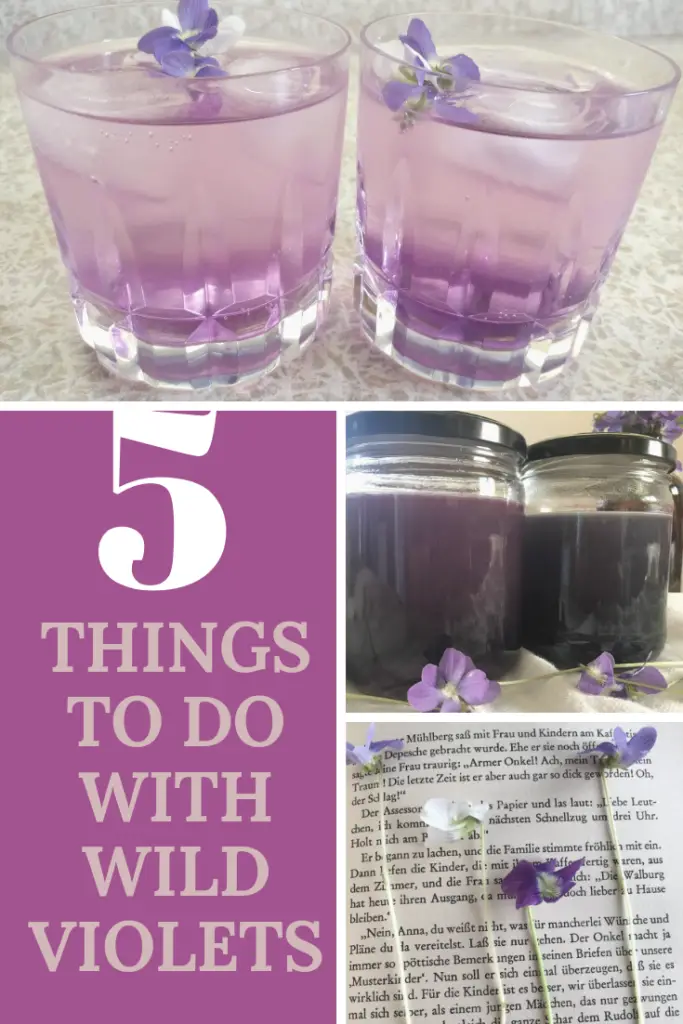

It looks like the petals on your kind of violet would need to be sugared individually, as the purchased ones – because your violet has 4 quite delicate and separate petals – BUT they DO look like the ones in FRANCE that have that intoxicating (to me) Violette flavour. Can you tell me the variety or kind of your violets so I can try to purchase it to grow here?
Thank you
Valerie
Aha! That’s what I should try the next time I attempt to sugar my violets, thank you for the tip, Valerie! I had to look it up, but I’m fairly certain that my violets are sweet violets, which are native to Europe, but can grow in zones 5-9. The beautiful thing about that variety is that they spread through underground rhizomes (like plants in the mint family), so they spread without much effort, which is probably why they’re considered a weed.
Great post! I love making simple syrups and would love to try this one. How do you suppose it would taste as the simple syrup in margaritas?